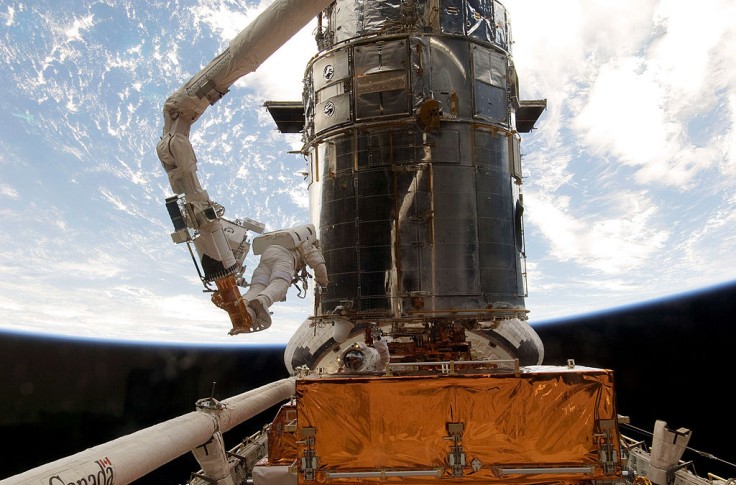
NASA Hubble Space Telescope has captured a colorful planetary Nebula surrounded by a bright halo ring. Despite the effort of the space telescope to capture the said Nebula, the space agency stated that it is still suffering from a glitch.
NASA Hubble Space Telescope: NGC 2438 Planetary Nebula
NASA Hubble Space Telescope has captured NGC 2438, which is a planetary Nebula that formed after the death of a star. As the said star dies, it spewed its outer layers of gas into the space, leaving a white-dwarf core behind, per NASA.
Moreover, the brighter inner ring of Nebula is surrounded by a halo of glowing gas over the span of more than four light-years. Several circular as well as the nearly round planetary Nebulas contain the said halo ring formation, and astronomers have been investigating how the stated formation has evolved.
In the said investigation, NGC 2438 is part of the studied Nebulas, in which researchers have discovered that the halo glows of the Nebula are due to the ionizing radiation of the central white dwarf.
To give much clarity of NGC 2438, Astronomy Picture of the Day (APOD) stated that its distance is about 3,000 light-years away from Earth and it is part of the nautical constellation Puppis. Surprisingly, NGC 2438 also appears to be on the borders of M46, which is a brilliant open star cluster. However, the central star of this planetary nebula is not only much older than the stars of M46, but it also moves across space at a different rate than the cluster stars.
What happens after a star like our Sun dies?
— Hubble (@NASAHubble) November 4, 2021
You get what’s called a planetary nebula, like this newly released Hubble image of NGC 2438.
Find out more: https://t.co/seHsZWrhle#NebulaNovember pic.twitter.com/Zs2NlNWi3Y
Kopernik also added that Sir William Herschel has discovered it first and John Herschel described it in 1827. According to the said description, NGC 2438 is round and has an equable light. It is also not brighter in the middle, but its edge is a little velvety.
For those who are not familiar with what a planetary Nebula is, National Schools Observatory stated that it is an expanding, bright disk of hot gas or plasma that is cast off by a dying low-mass star. It has nothing to do with planets, though, despite the given name. With regards to the said name, astronomers have called it Nebula because the stars looked like planets in a small telescope.
Hubble Space Telescope Still Suffering From Glitch
In a recent blog post of NASA, the space agency stated that they are doing additional steps to investigate Hubble instruments. To recall, the telescope's science instruments has turned into safe mode on October 25 after a loss of specific data synchronization messages.
The Hubble team assured people that they are concentrating their efforts to isolate the problem on hardware that commands the instrument, which is also part of the Science Instrument Command and Data Handling Unit.
Specifically, NASA pointed that the team is examining the control unit circuitry that produces synchronization messages and sends them to the instruments. While they analyze the control unit, they will also identify the possible workarounds for the said issue.
To know if the workarounds will work, the Hubble team will use a ground simulator to verify if the workarounds will perform as intended.









